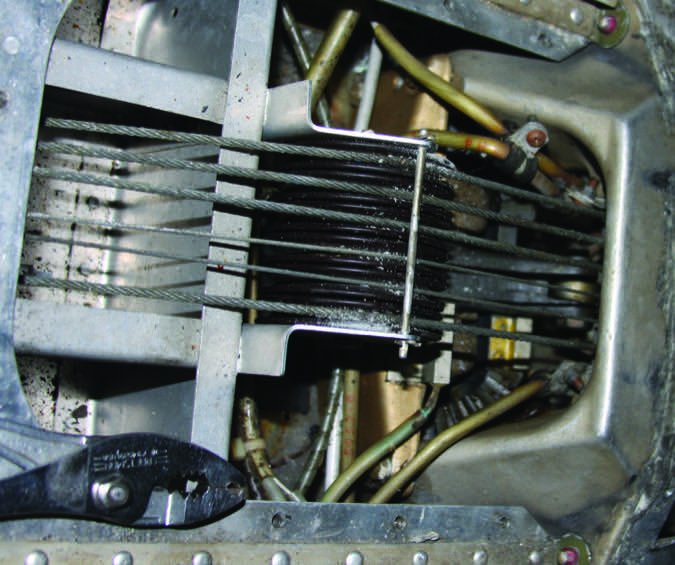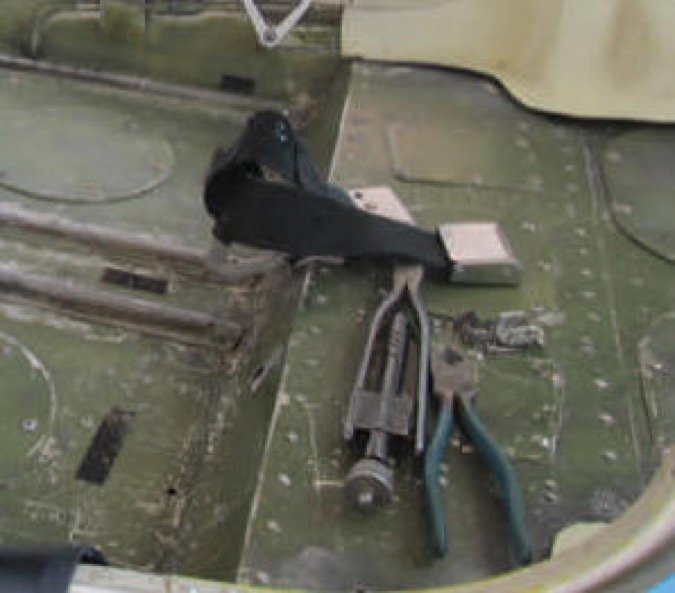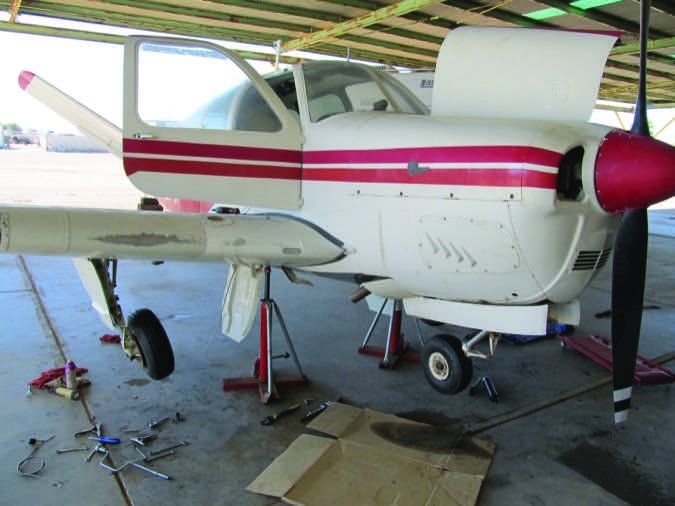Many of us recognize one of the ingredients to making our flying less risky and safer is good maintenance. At the same time, sometimes we give little thought to ways to make aircraft maintenance itself less risky and safer. The fact is the typical private-pilot-or-better performing preventive maintenance under FAR 43, Annex A doesn’t pay enough attention to safety while working on aircraft. Some “professionals” don’t either.
As an aircraft mechanic and pilot for over 50 years, I have witnessed more than one accident resulting in injury while working on aircraft. But a little common sense goes a long way toward working safely and promoting a safe work environment around aircraft when working with others or alone.
Preparation
It seems obvious—to help minimize risk and ensure safety, it’s necessary to come up with a plan—but too often, we don’t. We’d ideally have a checklist of sorts on how a job will be done and what steps must be taken to ensure work is accomplished in a safe manner. One of the most important things, of course, is that your mind should be clear so you can concentrate on what you are doing. Fatigue and distractions can significantly impact your personal safety as well as bystanders if you are not focused on the task at hand.
Safety when working on airplanes should be taken to a higher level than you would apply when repairing a leaky faucet in your home. Not only should you think and plan for safety while performing the job at hand, but consider that performing a task improperly can have a serious impact on the aircraft’s reliability.
As an aircraft owner working on your own plane, you should take pride in maintaining your aircraft in excellent condition and in so doing, you should make every effort to learn what it takes to do the job properly in the safest manner possible. Improvising test equipment as well as bypassing the use of special tools and procedures, seems to eventually catch up to us, with injuries and/or damage to the plane. Airplanes are expensive to repair and mistakes during maintenance can be costly—a plane can be replaced; a human cannot.
As with most endeavors, planning helps ensure job completion, reduces errors and provides the best opportunity for a job one can be proud of. It may seem unnecessary to plan a simple job you have done many times before. But in reality, even the simplest task needs a plan of some kind. So how does someone come up with a plan of sorts and what issues may be encountered during the task at hand?
Approved Data and Procedures
Something that many people seem to ignore as the primary source of information for servicing an aircraft is the service manual describing the task you intend to perform. Not all service information is in the manufacturer’s service manual—there likely is additional information covering individual components like starters, pumps, alternators, brakes and wheels, to name a few.
How many of us know there is a maximum inflation pressure stamped on tires? Exceeding this value can be dangerous as a tire that bursts or a wheel that uncontrollably comes apart can be like a bomb that can kill you or bystanders. When servicing an air/oil strut or working on a landing gear component, it may be necessary to deplete all the air and fluid out of the strut before working on it. Removing an air valve may seem like a simple procedure, but there’s high pressure behind it and it can become a fast-moving projectile when removed. Precautions like eye protection are necessary when doing a job such as servicing an air/oil strut, safety wiring an oil filter or working on the fuel system.
Think also about the chemicals that are commonly used in the repair and service of aircraft. Have you read the precautions and warnings on the labels? Do you need protection for your lungs, eyes, hands, etc.? How will you dispose of the residue after the job is done, and how will you store or dispose of the unused material left in the can?
What about contaminated clothing—should you just wash it with other clothes or are there special procedures to follow to prevent contaminating other family members’ clothing? What about used motor oil from aircraft, which contains small amounts of lead? Precautions should be followed to shield yourself and others from this and other materials.
A Word About Tools

Ask a mechanic if you can borrow his car or truck and he/she will probably hand you the keys, but ask to borrow one of his precious tools and the answer is almost always a resounding no. Professional mechanics make their living with tools and they can probably tell you every tool they own, when they bought it, and show you where every tool is in his/her tool box.
Some type of tool control or inventory procedure is necessary as at the end of the work day or when a task is completed, it is extremely important that no tool is left in an aircraft. I strongly suggest that at the end of the day even if the job will continue to the next day, pick up all the tools and account for every one of them used that day before calling it quits for the night. Missing tools that end up inside a plane are dangerous and have caused many accidents.
Special Tools And Equipment
Service manuals may not always suggest the use of all available safety equipment, but it’s still necessary to think and plan for whatever you may need prior to attempting the job. Service manuals often describe a special maintenance test procedure or specify a special tool to do the job correctly. While special tools often are necessary, there is no requirement to purchase one. Often you can make your own tool—there’s also the possibility of renting or even borrowing the correct item. But if a special tool is necessary, don’t improvise—not only your safety may be compromised, but using the wrong tool could jeopardize the safety and reliability of the aircraft.

Not convinced? Recently an accident investigation revealed that an engine seized due to oil starvation before the airplane crashed. When interviewing the mechanic who worked on the plane, it was determined he did not use the proper tool: tightening just one of the attaching nuts with a punch was not an approved procedure.
That single nut came loose—followed shortly thereafter by the remaining three—and the vacuum pump became detached from the drive pad. The vacuum pump shifted on its mount and loosened the shaft seal, allowing the engine to leak oil. The engine’s oil was depleted in a matter of minutes and the engine seized. You can buy a special tool from aircraft supply houses for around $30 (or make your own) that will prevent this from happening.
Another special tool for Cessnas is a jack pad. This is a simple steel part (different pads for spring steel gear or tube gear aircraft) is made to fit onto the landing gear of single-engine, fixed-gear Cessna aircraft. I have seen people improvise and make something work, but is it really safe to jack up an aircraft that may fall because you didn’t use the correct tool or procedure? Some heavier aircraft require special hardened bolts and fixtures spelled out in the maintenance manual that are necessary to prevent you and your helper from being injured, or the aircraft from being damaged, by falling off a jack.
Some safety issues with using lock wire is to always shield the tail of the safely wire you are cutting off, so it doesn’t end up in a critical airplane component causing damage or injury. Always wear some type of eye protection when working with safety wire and be mindful of your surroundings. Years ago, I was safety-wiring an oil screen when my wire touched a hot electrical circuit, causing a short and instantly melting a piece of wire onto an oily shop rag. Thankfully, there was no fire. By the way, do you know where the nearest fire extinguisher is, just in case?
A Word About Retracts
Retractable gear aircraft have many issues that must be planned for, not least of which are the correct jacks, fixtures, tools and precautions. But there also are the correct procedures necessary to properly check the landing gear operation. Working under a plane is always dangerous, so proper planning is necessary. A proper gear-swing operation takes at minimum two people—maybe more depending on the aircraft and facilities available.
What procedures will you use? Who will oversee the operation? What signals or communication will you use to ensure the gear is not operated when someone is within the gear well? How much do you trust the other person in the cockpit not to touch any switches while you are working under the plane?
Do it right
Working on an aircraft demands your full attention. Don’t allow distractions to get between you and your work. Think safety and make it part of your routine every day.
Mike Berry is a 17,000-hour airline transport pilot, is type-rated in the B727 and B757, and holds an A&P ticket with inspection authorization.





Thanks for the advice to have all the tools used on the aircraft accounted for even if you are coming to work on it the next day. I bought an old plane so I could fly it around for fun. I don’t know anything about maintenance so I think I’ll hire a professional and then learn from how they do it.
My dad noticed that his jet plane ran out of gas fluid, which is why we’re currently looking for a legit supplier. Well, it also never occurred to me that the tires must have maximum inflation pressure. Thank you for also suggesting here that other shops will rent out tools and equipment.
Thanks for sharing this blog. Aircraft maintenance is a critical part of owning any plane, whether you have one helicopter or an entire fleet. All aircraft need to be serviced regularly according to the specifications that were provided by their manufacturers